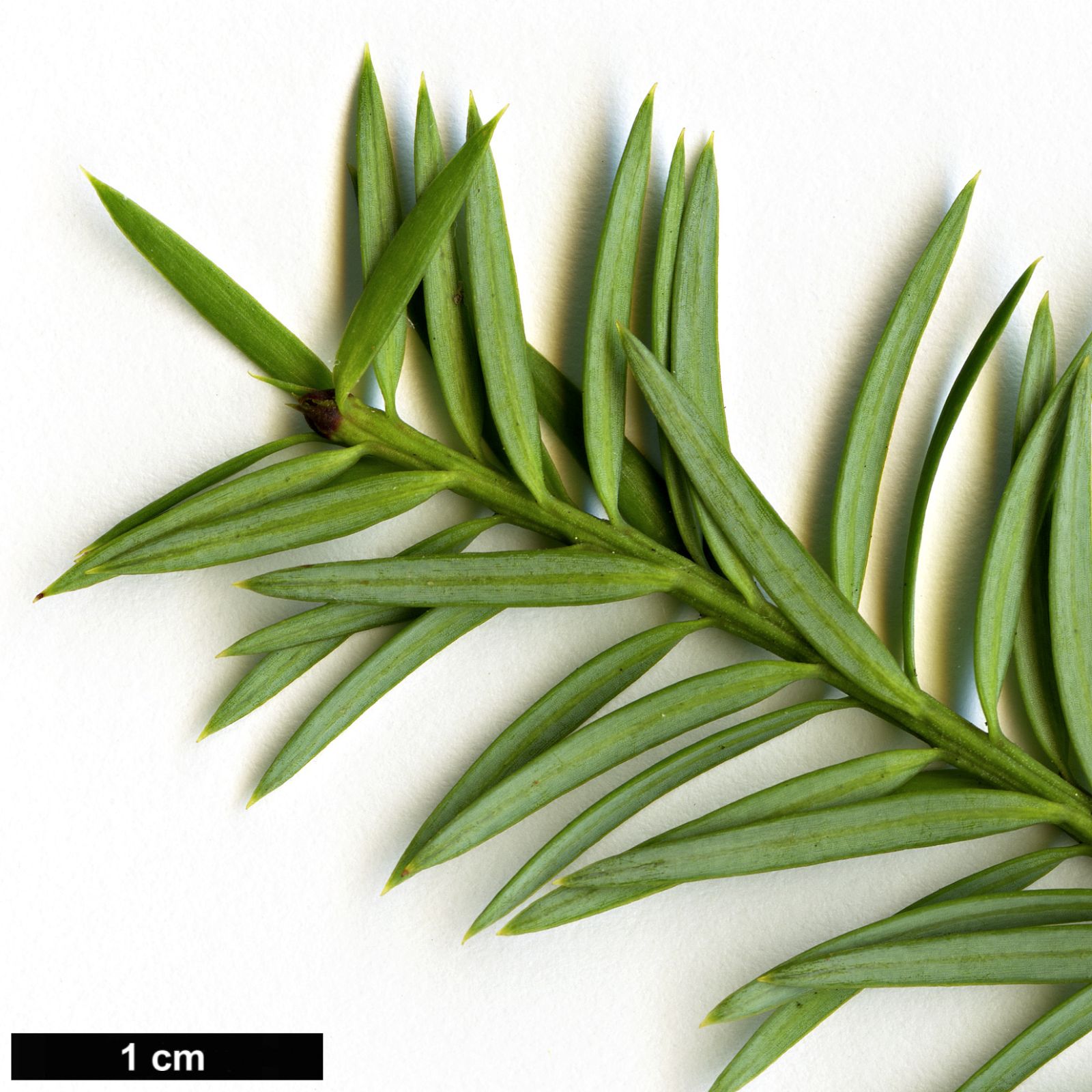Podocarpus acutifolius
Sponsor
Kindly sponsored by
The British Conifer Society in memory of Derek Spicer VMM, founder member.
Credits
Tom Christian (2023)
Recommended citation
Christian, T. (2023), 'Podocarpus acutifolius' from the website Trees and Shrubs Online (treesandshrubsonline.
Genus
Common Names
- Needle-leaved Totara
- Prickly Totara
- Westland Totara
Synonyms
- Nageia acutifolia (Kirk) Kuntze
- Nageia kirkiana Kuntze
Infraspecifics
Other taxa in genus
- Podocarpus acutifolius × lawrencei
- Podocarpus acutifolius × nivalis
- Podocarpus acutifolius × totara
- Podocarpus brassii
- Podocarpus costalis
- Podocarpus drouynianus
- Podocarpus elatus
- Podocarpus elongatus
- Podocarpus guatemalensis
- Podocarpus henkelii
- Podocarpus laetus
- Podocarpus laetus × nivalis
- Podocarpus lambertii
- Podocarpus latifolius
- Podocarpus lawrencei
- Podocarpus lawrencei × nivalis
- Podocarpus macrophyllus
- Podocarpus matudae
- Podocarpus milanjianus
- Podocarpus nakaii
- Podocarpus neriifolius
- Podocarpus nivalis
- Podocarpus nubigenus
- Podocarpus oleifolius
- Podocarpus parlatorei
- Podocarpus pilgeri
- Podocarpus pseudobracteatus
- Podocarpus salignus
- Podocarpus spinulosus
- Podocarpus totara
Shrub 0.5–2.5 m; rarely a small, shrubby tree to 15 m, usually multi-stemmed with a main trunk to 40 cm dbh. Bark thin, often stringy, flaking in long or short strips. Branches numerous, densely set, erect in arborescent forms. Branchlets initially slender and erect, vegetative branchlets soon lax, finely grooved, densely clothed with leaves which are gradually shed with age. Leaves spirally arranged, more or less perpendicular to shoot, acicular, (5–)8–23 × 0.75–3.5 mm, midrib indistinct on both sides, dark green to yellow-green, undersides with weak or conspicuous stomatal bands; base narrow, twisted, decurrent; apex acute, pungent. Pollen cones solitary or in clusters of 2–4 on a common peduncle, cylindrical, 12–20 × 2–2.5 mm at maturity, each subtended by 3–4 papery acuminate bracts. Seed cones solitary, rarely in pairs, on peduncles to c. 5 mm, with two bracts which fuse to become a swollen, fleshy, red receptacle 5–7 mm long subtended by a single ovoid seed, 4–5 mm long. (Farjon 2017; Allan 1961).
Distribution New Zealand South Island, especially western areas
Habitat Lowland to montane forest and scrub along river flats, 0–600 m asl. Often forming dense thickets in open areas and prostrate mats under canopy in Nothofagus forest.
USDA Hardiness Zone 7
RHS Hardiness Rating H4
Conservation status Least concern (LC)
Like other shrubby podocarps from the temperate southern hemisphere, Podocarpus acutifolius is a more variable entity in the wild than it is in cultivation. Native to western parts of New Zealand’s South Island, it can form a procument shrub in deep shade under Nothofagus forest or, more commonly, an upright shrub or small tree to <10 m in riparian habitats with plenty of light; populations of larger trees along the west coast are considered by several authorities to be hybrids with P. totara (Debreczy & Rácz 2011).
Needle-leaved Totara is cultivated in its native New Zealand where, although variable as a wild plant, horticultural stock is dominated by a densely branched upright form to 4 m tall and 2 m across, advocated for urban-riparian plantings and for hedges: ‘When planted in mass [sic.] its fine sharp needles serve as an almost unequalled deterrent to animals and unwanted “visitors”’ (de Lange 2023). The ease with which this plant may be propagated by hardwood cuttings (at least in New Zealand; de Lange 2023) may explain why one form has come to dominate there.
It is not clear when this species was introduced to cultivation outside New Zealand. Veitch’s Manual of the Coniferae (Kent 1900) makes no mention of it, and while the report of the 1931 RHS Conifer Conference (Chittenden 1932) discusses it, only a single cultivated plant is cited: a 1930 planting at Headfort, County Meath, Ireland. In the Bean Supplement Clarke (1988) reported that a tree ‘at Castlewellan, Co. Down, planted as P. acutifolius and agreeing well with it, is [7.6–9.1 m] high’ but such dimensions on a cultivated tree, even in Ireland, must ring an alarm of suspicion. It was cultivated before 1980 by Graham Hutchins in Essex, who wrote that it was ‘reasonably hardy in a sheltered position in the garden’ (Hutchins 1980). Other reliable records include a plant on the scree at the Sir Harold Hillier Gardens, 3.5 m tall in 2013 (Edwards & Marshall 2019). Others in UK cultivation include plants at Benmore, Argyll, and Logan, Wigtownshire, and another at Tregrehan, which by 2022 had formed a suckering mass about 2 m tall and >4 m across, kept in check by mowing (pers. obs.). A plant in Ray Wood, Castle Howard, North Yorkshire was obtained from the now untraceable Keith Starr Alpines in 1981 and has formed a mounded patch about 2 m wide and standing 80 cm tall, in quite deep shade (J. Grimshaw pers. comm.); another at the University of Dundee Botanic Garden has formed an indistinguishable mass >6 m across, also in quite deep shade, but this may have started out as a mass planting (pers. obs.).
In addition to known hybrids with other New Zealand podocarps, including at least P. totara and probably P. laetus, too, spontaneous P. acutifolius × lawrencei hybrids have arisen in cultivation as well as through deliberate breeding (Edwards & Marshall 2019; Hutchins 1996).
'Golden Dwarf'
A slow-growing selection with golden-yellow leaves, reported by Auders & Spicer (2012) as having been cultivated in the UK since at least 1985, but with no details of origin. It could be a renaming of ‘Golden Lady’, or vice-versa!
'Golden Lady'
A female clone selected from plants raised from seed collected by Derick Paterson close to the Buller River. ‘A delightful gold in full sun’ according to British horticulturist Doug Smith (Smith & Hudson 2017).










